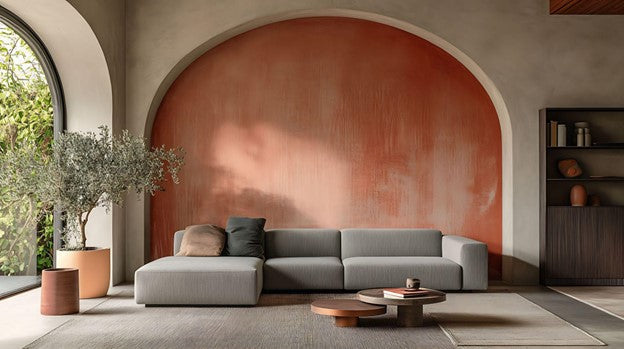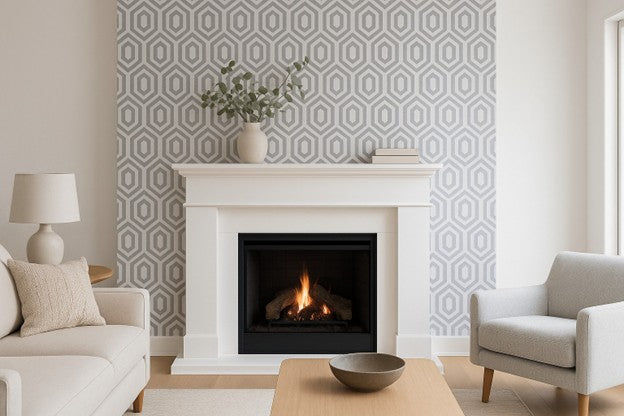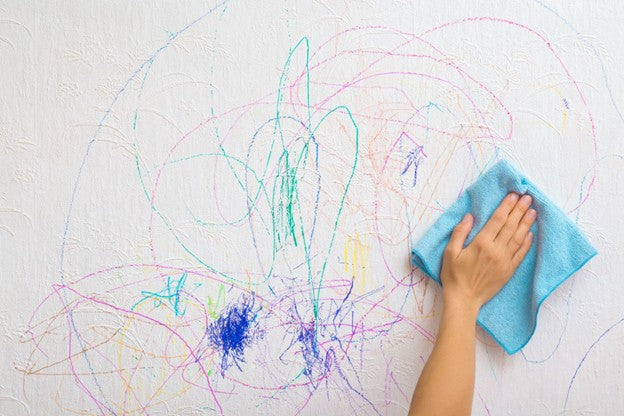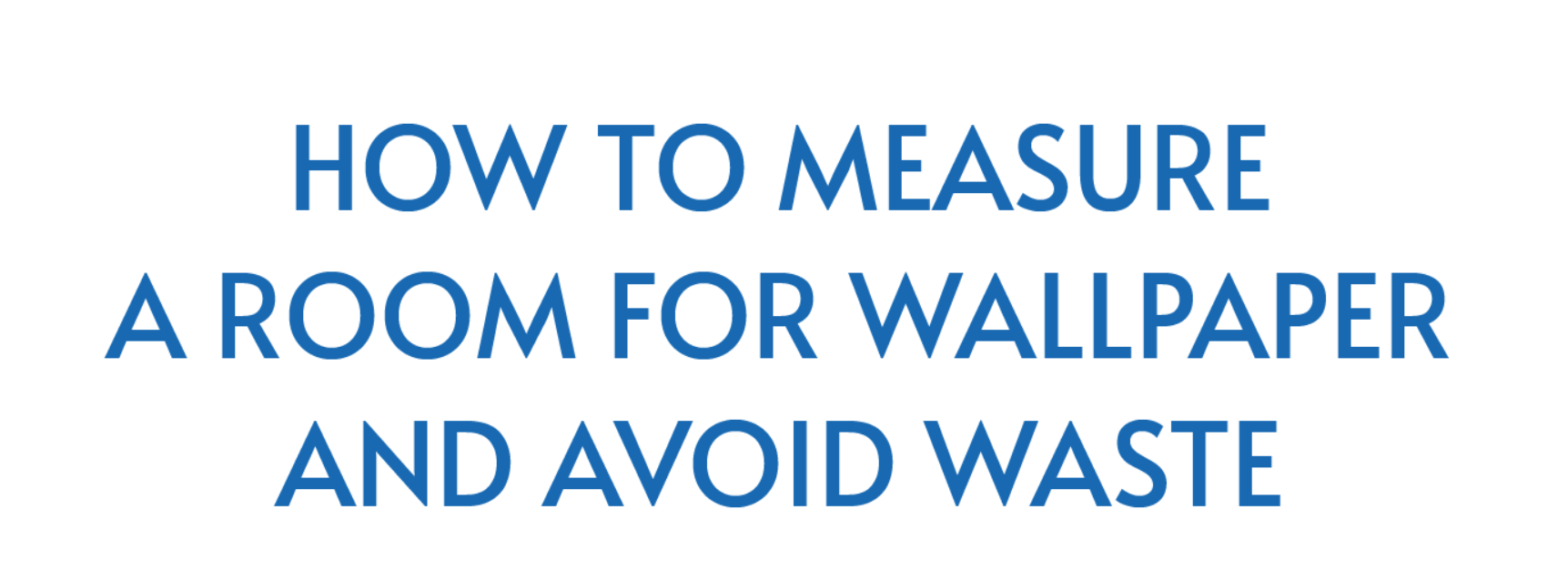
This guide provides practical, step-by-step instructions on everything from preparation to finishing touches.
Getting Ready
To wallpaper an archway or curved wall effectively, you’ll need the following tools and materials:
● Measuring tape and level – To ensure precise measurements and straight alignment.
● Utility knife or scissors – Use sharp blades for clean cuts, replacing them frequently to avoid tears.
● Plastic smoothing tool and seam roller – Essential for removing air bubbles and securing seams.
● High-quality adhesive – ROMAN’s PRO-732 Extra Strength is ideal for heavy-duty applications, while PRO-555 Extreme Tack works well on curves.
● Primer – Prepares the wall for optimal adhesion.
● Sponge and bucket of water – For cleaning excess adhesive and keeping tools tidy.
Bear in mind that the best type of wallpaper for wrapping around a curve is flexible and lightweight, allowing it to conform easily to the curved surface without wrinkling, tearing, or losing its pattern alignment.
Before you begin, be sure to prepare the wall properly by cleaning the surface and applying a primer that is appropriate for the type of surface you’re dealing with.

Applying Wallpaper to an Archway
Step-by-Step Process
1. Hang Wallpaper Above the Archway
Begin by hanging wallpaper above the archway as you would on any standard wall. Smooth the wallpaper flat against the surface, trimming it along the ceiling for a clean edge. Be sure to consider the pattern layout when hanging wallpaper around an arch. Patterns should be centered over the arch whenever possible.
2. Trim Excess Wallpaper Around the Arch
Use sharp scissors or a utility knife to trim the wallpaper around the arch, leaving about an inch of overhang. This overhang provides enough material to wrap around the arch without exposing the edge.
3. Create Relief Cuts
Make small relief cuts every 2-4 inches along the overhang. For tighter arches, use more frequent cuts to allow the wallpaper to conform to the curve without wrinkling. Ensure the cuts stop just short of the wall to avoid damage.
4. Seal the Notches
Gently press each notched section against the archway, ensuring it adheres smoothly to the curve. Use a damp sponge to moisten the back of the wallpaper if necessary for better adherence.
5. Measure and Prepare Archway Strips
Measure the thickness of the arch at multiple points to ensure accuracy. Cut two strips of wallpaper slightly narrower than the arch (quarter inch) and long enough to cover half the arch’s length, with an additional quarter inch for adjustments. Plan for an “invisible” splice cut where the strips meet. Overlap the two pieces slightly and use a sharp blade to cut through the middle of the overlap. This technique creates a seamless join that blends perfectly with the pattern.
6. Hang Strips Inside the Arch
Starting at the middle of the arch, apply the strips carefully, smoothing them into place. Align the edges for a clean fit and double-cut the seam where the strips meet for a professional finish.
7. Final Smoothing and Seaming
Use a seam roller to press edges and seams firmly into place. Smooth the wallpaper with a plastic tool to remove any remaining air bubbles. For the final trim, ensure your blade is exceptionally sharp to achieve crisp, clean edges. A dull blade may rip or drag the material, compromising the finish.
Wipe away any adhesive residue with a damp sponge, paying attention to moldings and adjacent surfaces. Smooth the wallpaper once more with a seam roller to ensure every edge is secure.

Common Challenges and Solutions
Every installation presents unique obstacles, from pattern alignment to handling corners. Identifying potential issues and addressing them will save time and ensure a flawless result.
Bullnose Corners
● Challenge – Wrapping rounded corners is much more difficult than square corners without creating wrinkles or gaps.
● Solution – Use extra adhesive and make precise relief cuts every 2-4 inches to allow the wallpaper to conform smoothly. Press each notched section firmly into place for a seamless finish.
Relief Cut Errors
● Challenge – Relief cuts that are too deep or uneven can result in visible gaps or tears.
● Solution – Make shallow, evenly spaced cuts and trim excess material cleanly. Avoid overcutting by measuring and marking before making the cuts.
Pattern Misalignment
● Challenge – Maintaining pattern continuity on arches can be tricky.
● Solution – Start from the center of the arch and work outward, aligning the pattern carefully as you go. Double-check alignment before smoothing the wallpaper fully.
If the pattern misalignment is unavoidable, plan ahead by placing mismatched sections in low-visibility areas.
When to Call a Professional
Wallpapering intricate areas like arches and curved walls requires patience and precision. If you’re unsure about tackling the project yourself, consider hiring a professional. The Wallcovering Installers Association (WIA) is an excellent resource for finding experienced installers in your area.
Wallpapering an archway may require extra effort, but the results are worth it. By using the right techniques and tools—including ROMAN’s primers and adhesives—you can achieve a stunning, long-lasting finish. With this guide, you’re ready to transform your curved walls into show-stopping design elements.
Recent Posts
-
How to Use Wallpaper to Create a Faux Brick Effect
read more >> -
Wallpapering Inside Closets & Pantries: A Fun Surprise Element
read more >> -
How to Install Wallpaper on a Fireplace Surround for a Bold Touch
read more >> -
How to Wallpaper a Kitchen Backsplash (and Waterproof It)
read more >> -
How to Remove Stains From Wallpaper Without Ruining It
read more >> -
How to Measure a Room for Wallpaper and Avoid Waste
read more >>







